Having one of the best mountain bike mudguards on your bike may not be the most glamorous or exciting prospect, but when the trails get sloppy they are worth their weight a hundred times over.
We know there’s nothing particularly cool or fancy about mountain bike mudguards (or mountain bike fenders, in some parts of the world). However, if you want to ride trails with clear vision this winter, we’d highly recommend you find the right mudguard for you and your bike.
Not all mountain bike mudguards are created equal, so we’ve put some of the best options to the test for you.
If you're unsure which MTB mudguard is best for you, we've got a buyer's guide at the end of this article.
Editor's note: this best list was updated on 14 July 2025 with the addition of pros and cons for each entry and a section on how we test mudguards. We have also removed products no longer available for purchase.
Best mountain bike mudguards
Mudhugger EVO Bolt-on
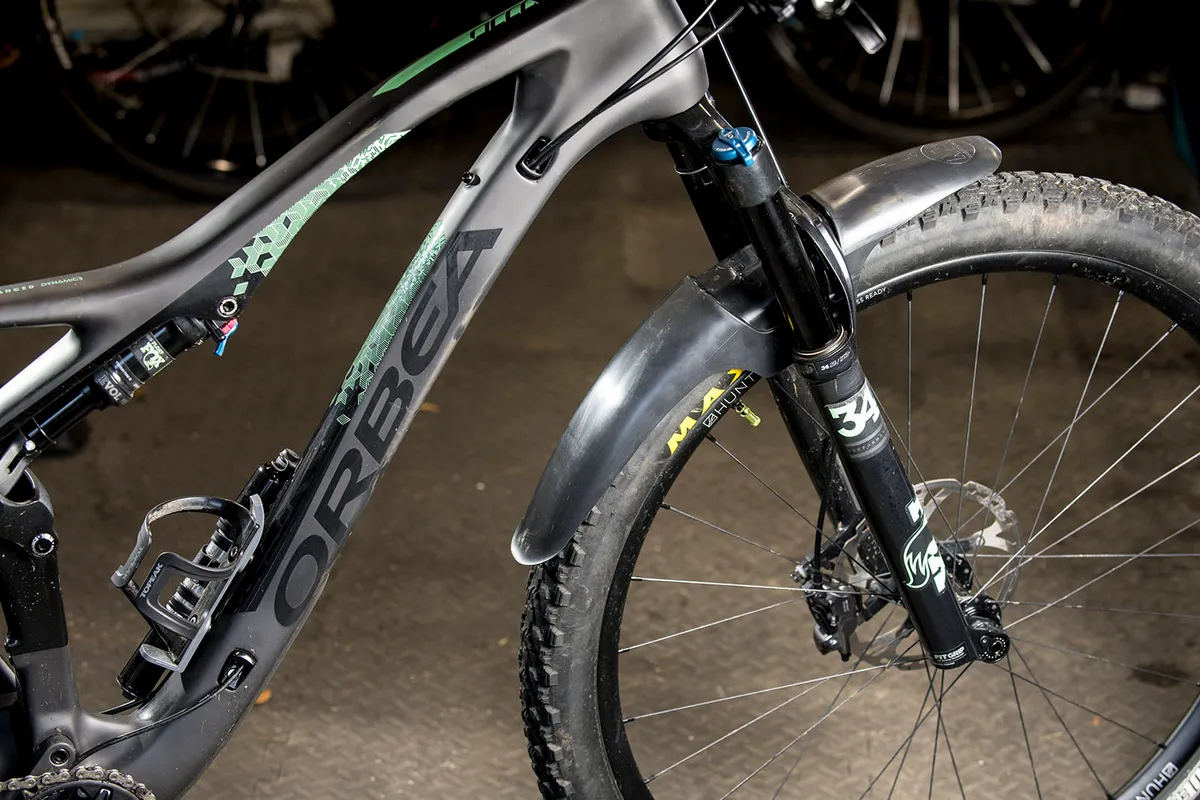
- £30 / $48 as tested
- Pros: Secure mount; effective coverage; protects fork seals well
- Cons: Bolt-on design takes time to swap between bikes
The Mudhugger EVO Bolt-on's protection is great, keeping us clean down to knee level, without the guard feeling oversized. Fork seals are well-protected by a pair of ‘wings’.
The bolt-on mount is secure, so there’s less movement over rough ground than with strap-on models. Made from recycled and recyclable polypropylene, this is as sustainable as a mudguard gets. Adaptors exist for many mountain bike forks, and if there isn’t one for yours, the cable tie and Velcro version offers the same performance.
The only downside of the bolt-on design is it’s not as quick and easy to swap between forks or remove for storage as a fender with cable ties or Velcro mounts.
SQUIRREL_13201931
RRP ProGuard Max
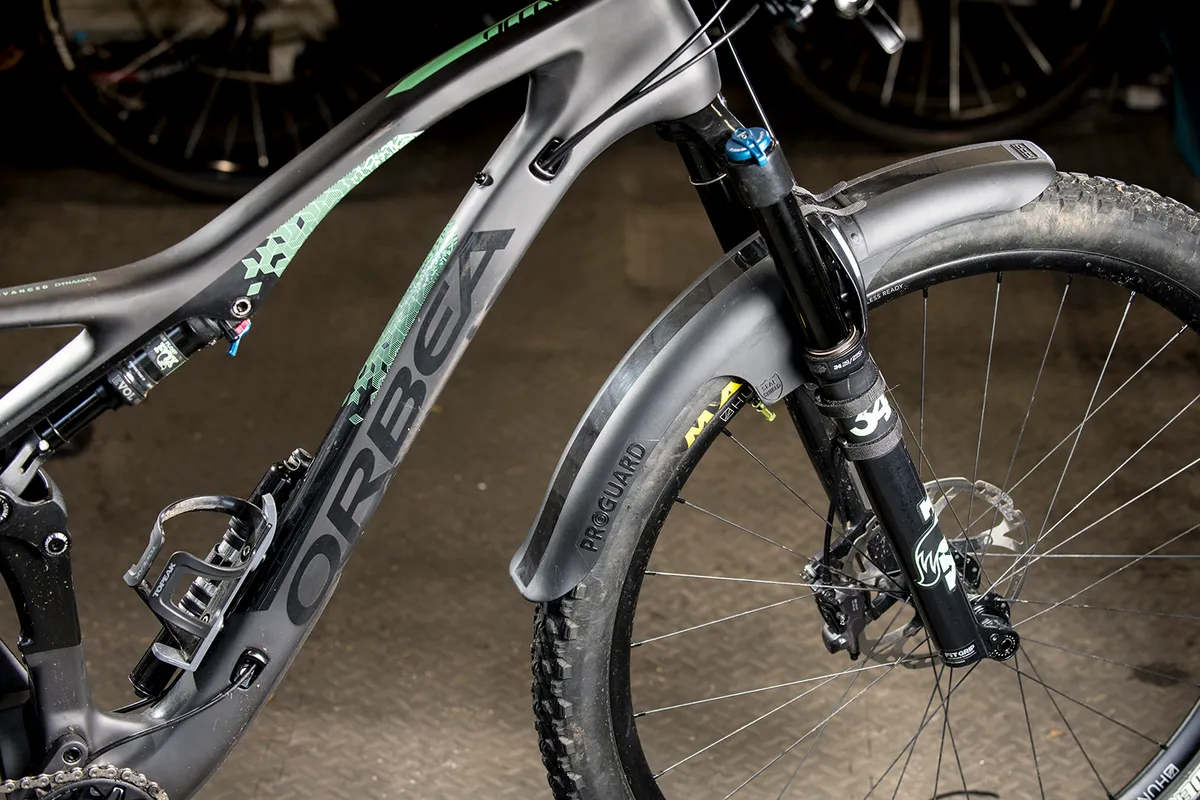
- £29 as tested
- Pros: Offers good protection; shields seals well; lightweight
- Cons: Fitting isn't as easy as others; Velcro straps are pricey
RRP's ProGuard mudguard has a choice of upper mounting holes and the option to use Velcro straps (not included, but available from RRP) instead of the supplied cable ties. This enables you to customise the fit, fork dimensions allowing.
The length of this fender means it shields you from mud splashes below your knees, and it protects fork seals, too. It’s lighter than others offering similar coverage.
Movement over rough terrain is minimal, thanks to the double mounts for each fork leg.
However, fitting is more complex than some, and RRP’s Velcro strap kits are pricey (£9.99 or £19.99 with rubber fork protectors).
SQUIRREL_13209678
Mucky Nutz MugGuard Short
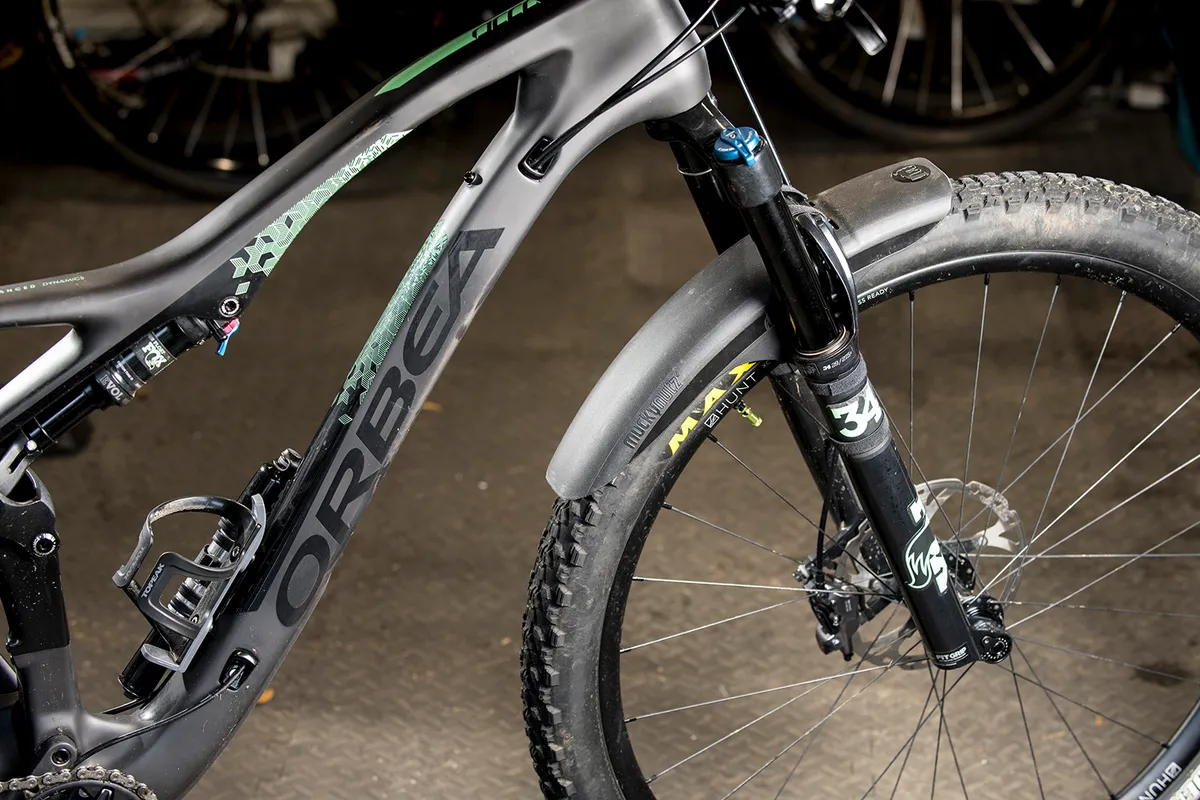
- £20 as tested
- Pros: Decent coverage for the size; solid mount; lightweight and stable
- Cons: Not the easiest to install
Despite this being the ‘Short’ version, coverage is good enough to keep your top half clean and fork seals free from grit and water.
Slots (rather than holes) on the top enable adjustment to suit different forks and tyres, while double mounts on the legs ensure a rock-solid fit.
It’s light at 78g, stable on rocky trails, doesn’t clog easily and is made from recycled and recyclable plastic.
It's important to note that you need to be careful when cutting the short double-sided Velcro strip to length. It’d be easier to fit the mudguard if the Velcro straps had buckles, instead of having to overlap them under tension.
SQUIRREL_13076967
Mudhugger EVO Long

- £29.99 plus £5.99 Quick Fit kit
- Pros: Solid construction; impressive coverage; easy to attach
- Cons: Not compatible with reverse-arch forks
Stiff and strong enough for downhill racing, the 515mm EVO Long is Mudhugger’s biggest front fender. It’s been designed with the RockShox ZEB, and Fox 36 and 38 in mind, with a depression under the fork brace to prevent the crown from hitting the mudguard at full compression. However, it’s compatible with all Boost forks, except the RockShox SID and Fox LiveValve models.
The EVO Long is easy to attach with the supplied cable ties, although we’d recommend Mudhugger’s Quick Fit kit (£5.99) if you want to put it on and take it off frequently. This contains four high-quality, 210mm-long, silicone-backed hook-and-loop straps, which fix it securely in place.
There are two sets of three slots in the top of the fender, giving two potential positions in which to attach it to the fork brace, and two sets of two slots in the legs. These legs broaden to help protect the fork seals. To use the EVO Long with reverse-arch forks, Mudhugger say it’s best to drill four holes to fit it to the arch.
There’s plenty of mud room, and protection from spray and crud is good. Made from recycled plastic, it weighs 138g (including the Quick Fit straps).
SQUIRREL_13204840
RRP Proguard Front Max

- £29.99 plus £19.99 hook and loop pack
- Pros: Good adjustment; great protection; secure mount
- Cons: Collects some mud at the rear
Designed to fit all Boost forks except those with a reverse arch, the ProGuard Front comes in Mini, Standard and the 582mm Max length reviewed here. It offers the most fore-aft adjustment of the models on test, and has a depression on top to stop the fork crown fouling the fender at full compression, while still giving good mud clearance. However, Mudhugger’s system is better.
Six cable ties are provided, but we opted to use RRP’s hook-and-loop straps instead (£19.99 including fork-protector pads – enough for two fenders). Our Max fender, with straps and protectors attached, weighed 171g.
There are five rows of covered slots and holes on the top, plus four slots in the legs. Fitting the fender is fairly easy, but we had to cut the hole covers out. Also, the leg straps had to be routed around the pressure-release valves on our RockShox ZEB and Fox 36 forks. Once in place, the fender didn’t budge.
Spray protection is very good, aided by the lip at the front and flare at the tail, while RRP’s Seal Shield keeps muck away from your fork seals. The rear collects a little mud under it, though. At full compression on our RockShox ZEB, there was very slight crown contact, but not with our Fox 36.
SQUIRREL_13209678
Mudhugger MK2 Rear Mudhugger
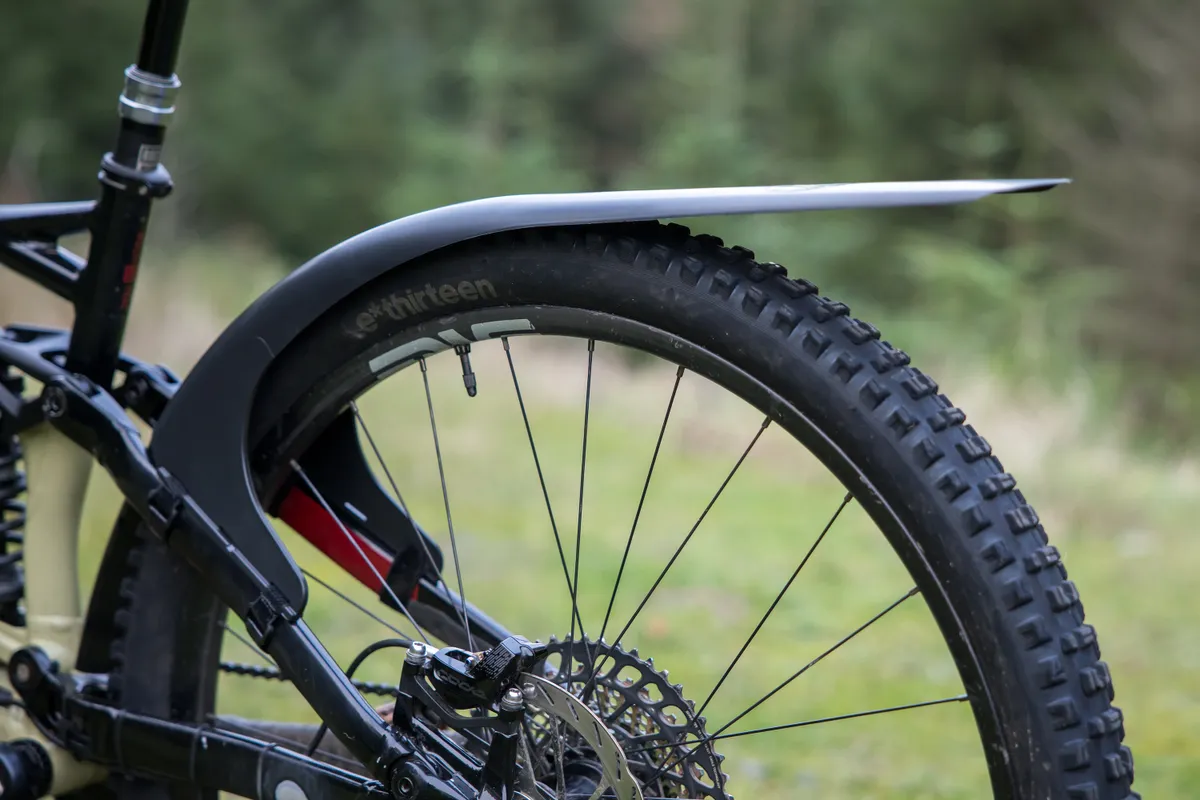
- £35 / $55 as tested
- Pros: Lightweight; well-priced; great protection
- Cons: Not the prettiest
The Mudhugger MK2 Rear Mudhugger offers excellent protection from mud and slop flying up from your back wheel.
The rear MTB mudguard is lightweight at 306g, affordable, and easy to fit and remove.
It can be noisy on rough terrain, though, and its looks might not be to your personal taste.
SQUIRREL_13100197
Also consider…
The following mountain bike mudguards scored fewer than four out of five stars in testing, so they haven't been included in our main list.
Crud XL Fender

- £35 as tested
- Pros: Good coverage; decent compatibility; sturdy construction
- Cons: Doesn't cover fork seals; not the prettiest
Compatible with all forks apart from those with a reverse arch, Crud’s 650mm-long, 195g fender has an unusual design. Its sturdy foam-backed legs extend down the inside of the fork lowers and are attached with three rubber O-rings per side.
The fender itself is split into a shorter front piece, which narrows towards its tip, and a longer rear section, with the fork arch sitting in between. It doesn’t give any protection for fork seals, and doesn’t attach to the crown.
The rubber rings can be stiff to pull round larger-diameter forks, such as a RockShox ZEB, and adjusting them with cold, wet or muddy fingers is tricky. We used a small hex key to help get them back over the retaining pegs. The split arms that support the fender’s two sections also needed to be carefully managed past the brake hose guides on our Fox 36.
Once fitted, the fender is rock solid. It can be sat higher for greater clearance in muddy conditions or lower for better spray protection (which is ample, with the flare at the back keeping down tubes impressively clean). There was no clogging either.
On full compression, the ‘nose’ of the rear section contacts the fork crown (noisily), but it’s made from soft material to avoid damage.
SQUIRREL_13076963
Mucky Nutz MugGuard Long

- £25 as tested
- Pros: Good coverage; sleek design
- Cons: Potential for buzz when caked in mud; not the best seal cover
Available in Short and Long versions, the MugGuard is designed to fit all standard Boost and non-Boost suspension forks, and tyres up to 3in wide. Made in the UK from recycled plastic, this simple design has three mounting slots in the top and two per leg for its Velcro straps (you need to cut these to length, so measure carefully).
Unlike with the RRP and Mudhugger, there’s no plastic loop on each strap to pull it back on itself, so it’s hard to get them really tight.
A slight depression on top of the fender reduces the chances of it hitting the fork crown at full compression – although there was still some buzz with our RockShox ZEB – and gives ample room for mud below. The rear edge is slightly sharpened to help cut mud off the tyre.
With its generous length ahead of the fork and its front lip, the MugGuard does an excellent job of keeping spray off your face – we’ve used it in biblical rain at splashy bike parks without needing eyewear.
The legs don’t offer a lot of fork-seal protection, and there’s a bit more flop and potential buzz on bigger hits, especially once it’s weighed down with mud.
SQUIRREL_13204842
Topeak DeFender FX 279er
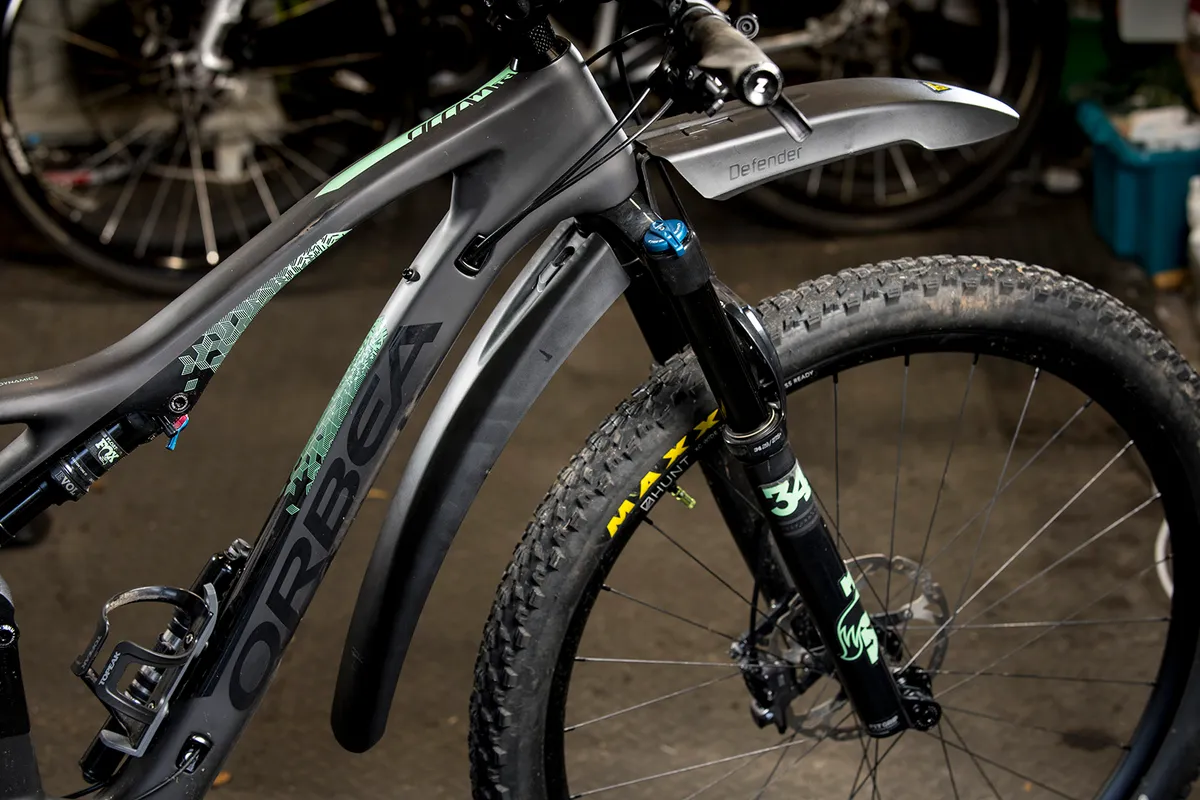
- £19
- Pros: Good coverage; shields you well in wet weather; very affordable
- Cons: Heavy; no fork seal coverage; dated design
This mudguard attaches via a bung in the fork steerer, and has front and rear portions, connected with quick-release clips, which are easy to fit and remove.
Wheel coverage is great, so little spray reached our tester's top half. It’s also the cheapest option here.
Due to its design, the fender sits high above the tyre, so doesn’t offer any fork-seal protection – a major reason for using a mudguard.
Not only are the seals exposed to spray from below, but also to mud and water dripping from the fender itself.
The front and rear sections flex with the slightest movement, or when riding over rough ground. It’s heavy at 203g, too.
SQUIRREL_13076961
How we test mountain bike mudguards

Being based in the UK means we test mountain bike mudguards on some of the wettest, sloppiest trails.
Our testers make sure to test mudguards on truly sodden days, seeing how they perform against heavy spray and when caked in mud.
Long test cycles and plenty of wet days mean our testers can be thorough with their conclusions.
Ultimately, our mudguard reviews are based on the following criteria:
- Coverage – how much protection does the mudguard provide? Does it also cover the fork seals?
- Durability – does the mudguard hold up on rough trails?
- Ease of fitting – can you easily swap the mudguard on and off?
- Price – does the mudguard present good value?
Why you can trust BikeRadar
BikeRadar has been an authority on bikes and cycling tech since its inception in 2007, delivering the world’s best riding advice.
We have experts testing all types of bikes, parts, clothing and accessories, from road, mountain and gravel bikes to commuting, bikepacking and electric bikes.
Our reviews are always editorially independent – with no exceptions. Our reviewers comprehensively test all products in the real world, always reflecting on performance, value and the wider market when delivering their verdicts and review ratings.
When you see a product listed in our buyer’s guides, you can be confident that it’s worthy of your attention. Only gear that we’ve ridden and rated 4 stars and above are included. In some cases, we’ll also highlight some of our other contenders that narrowly missed out with 3.5 stars or below.
We have more than 15,000 product reviews available at your fingertips, as well as expert buying, maintenance, training, skills, health and fitness advice.
Our annual Bike of the Year test is an industry benchmark and the BikeRadar team consists of some of the most experienced riders and testers in the business.
Mountain bike mudguards buyer’s guide
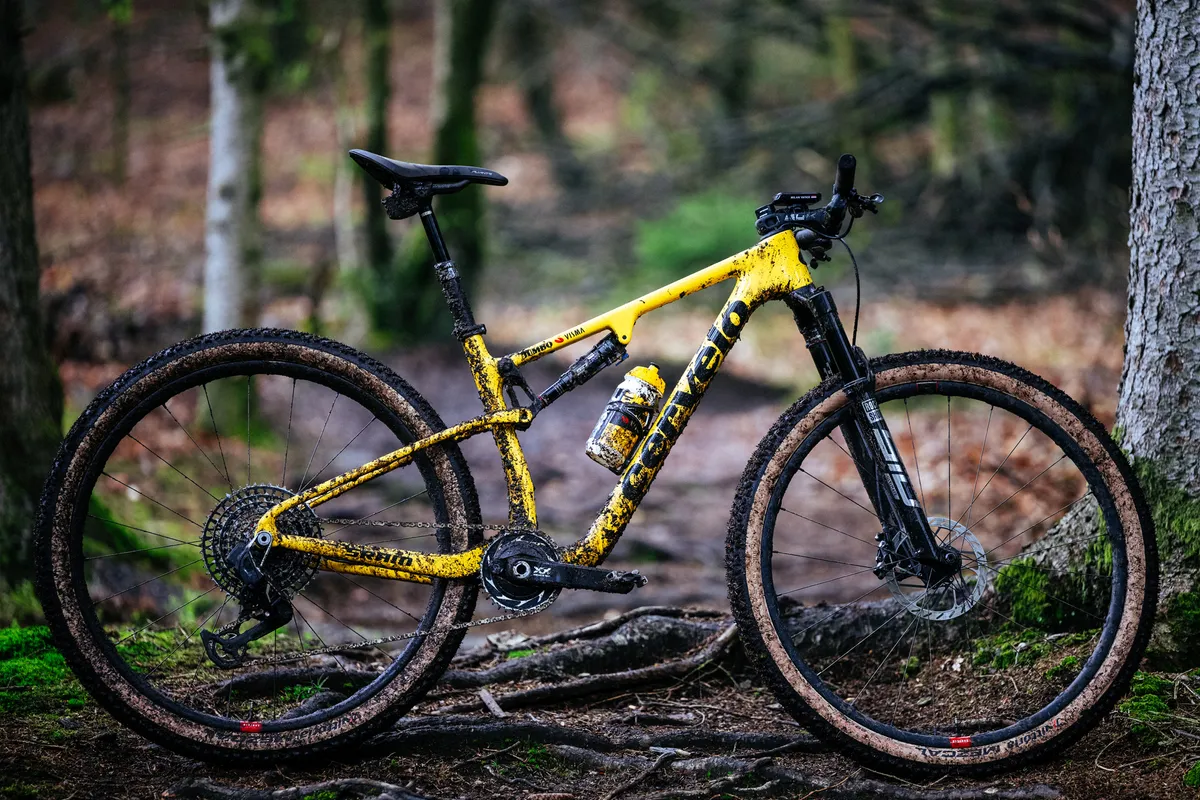
So, you’re fed up with mud and puddle water splashing up into your face and eyes while riding? Sounds as though you need a mudguard.
The best front mudguards for mountain bikes attach to the lowers of your suspension fork, sitting close to the wheel, and catching mud and spray before it even gets close to you or your bike. The bigger the guard, the bigger the coverage, so it’s important to choose a mudguard that’s suitable for your trail conditions.
Zip ties used to be the standard method of attachment for most front mudguards due to their strength and low cost.
However, in the last few years, different mounting methods have surfaced: some mudguards bolt directly onto your fork crown, whereas others use velcro straps in place of zip ties as a reusable and less wasteful alternative.
Do I need a mountain bike mudguard?
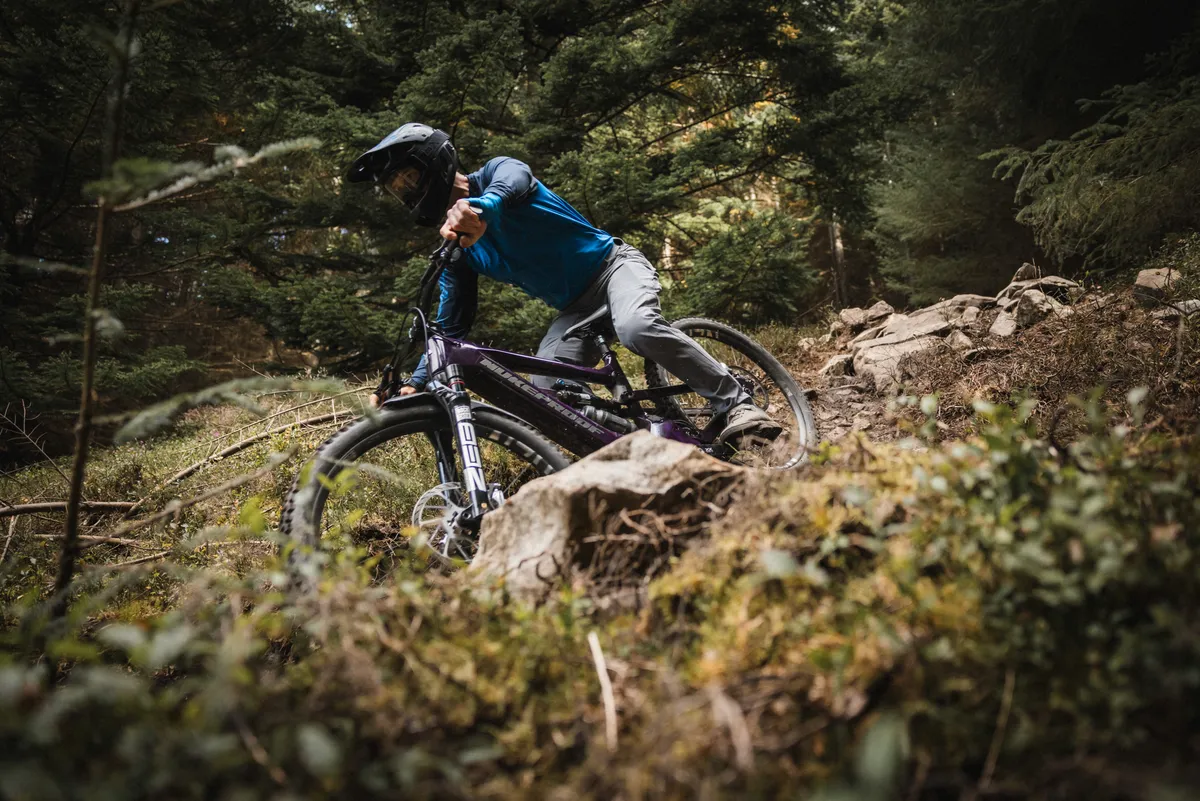
If you ride in the wet, chances are you’ll benefit from using a mudguard. Front mudguards are light, relatively inexpensive and durable.
As well as protecting your face and eyes from mud and spray, they also act as an extra layer of protection for your fork seals, protecting them from dirt and grime build-up.
Many of the best mountain bike mudguards are also easily removable, especially those that bolt directly to your fork or are attached by reusable Velcro strips. So, if you really wanted to, you could even remove your mudguard for dry days and deploy it for cycling in the rain.
How to fit mudguards to a mountain bike
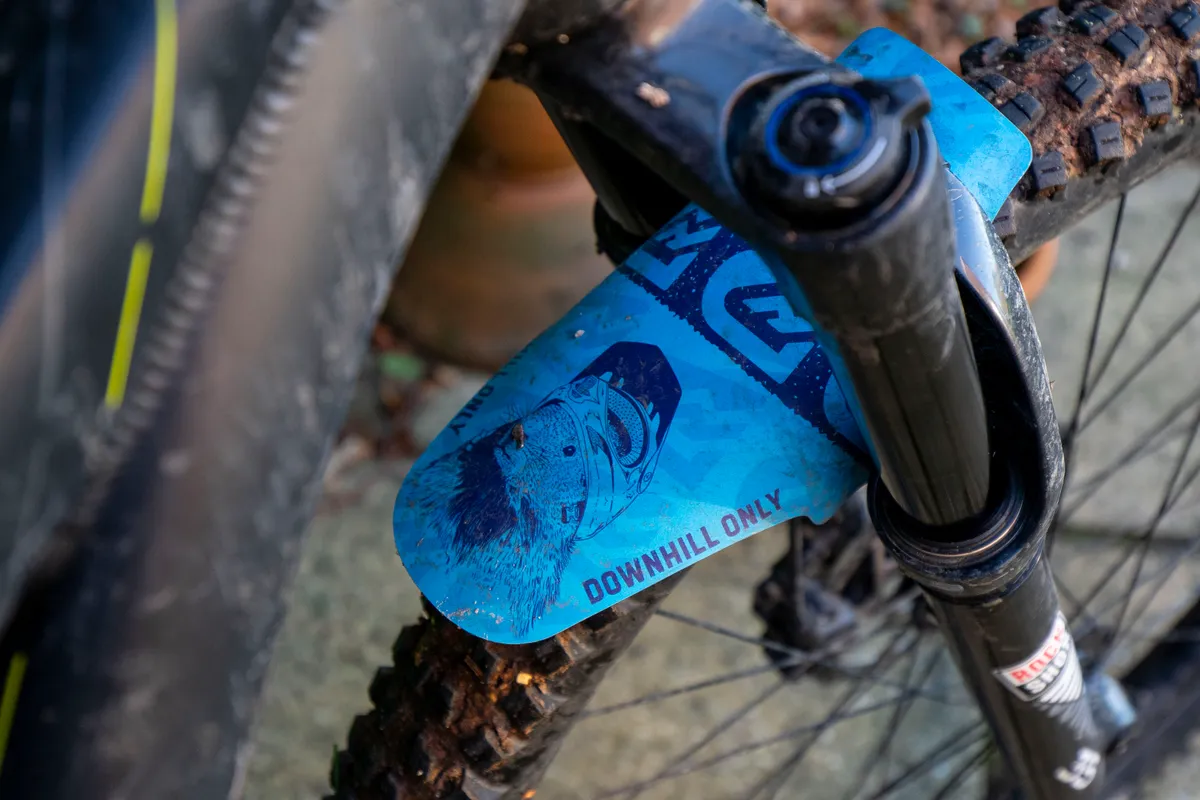
Most mudguards are designed to attach to your mountain bike via pre-drilled holes in the plastic moulding, which can then be attached to your fork brace and lowers (or frame, in the case of rear mudguards) with zip ties.
However, in an attempt to reduce single-use waste, some manufacturers now offer hook and loop straps, which do the same job as the plastic zip ties but are reusable, should you want to remove your mudguard or swap it between bikes.
Some fork manufacturers have also introduced bolt holes on the back of their fork braces. This allows for compatible mudguards to be bolted directly to the fork and results in a very clean look.
How much coverage do I need?
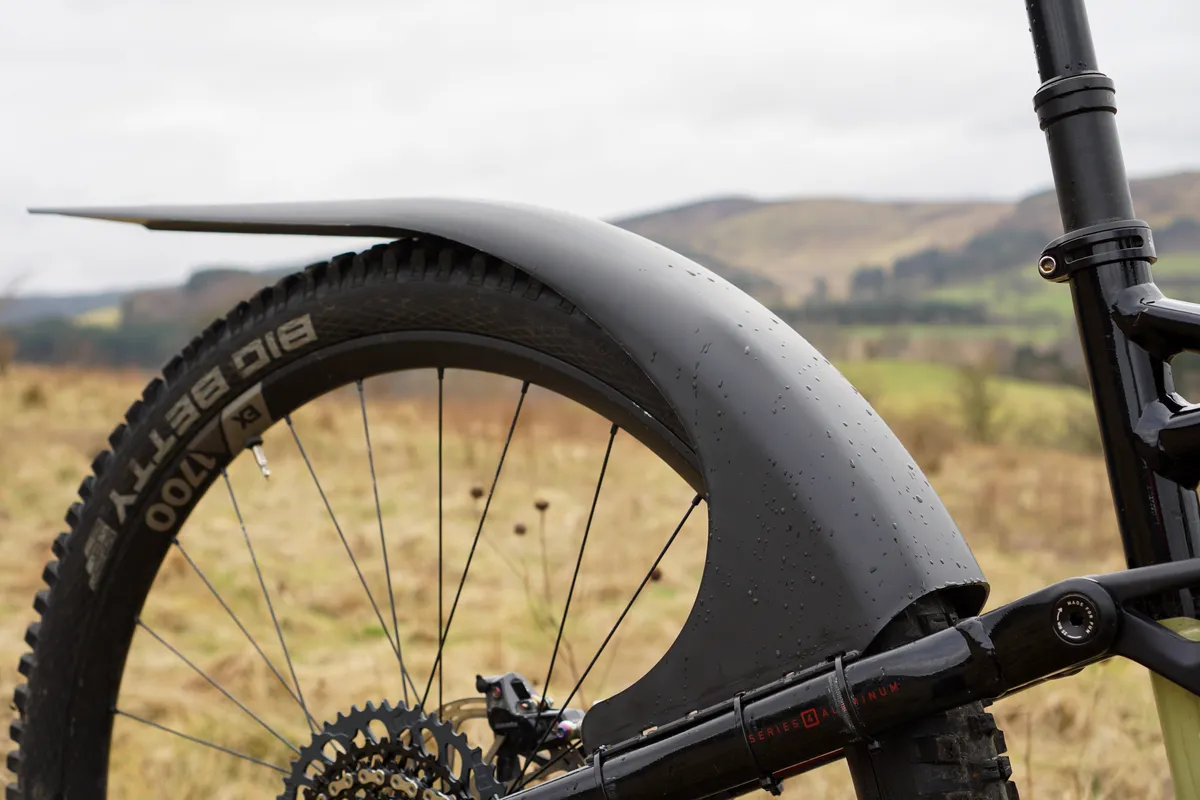
How much coverage you need depends on the trails and weather where you ride. If you ride predominantly in dry climates or on super-hardpacked trail surfaces, mud won’t be too much of a concern and you may get away with a shorter mudguard to keep the occasional puddle at bay.
However, if you live somewhere prone to rain and ride natural trails, a mudguard with bigger coverage will do a much better job of keeping the slop off your face.
Front vs rear mountain bike mudguards
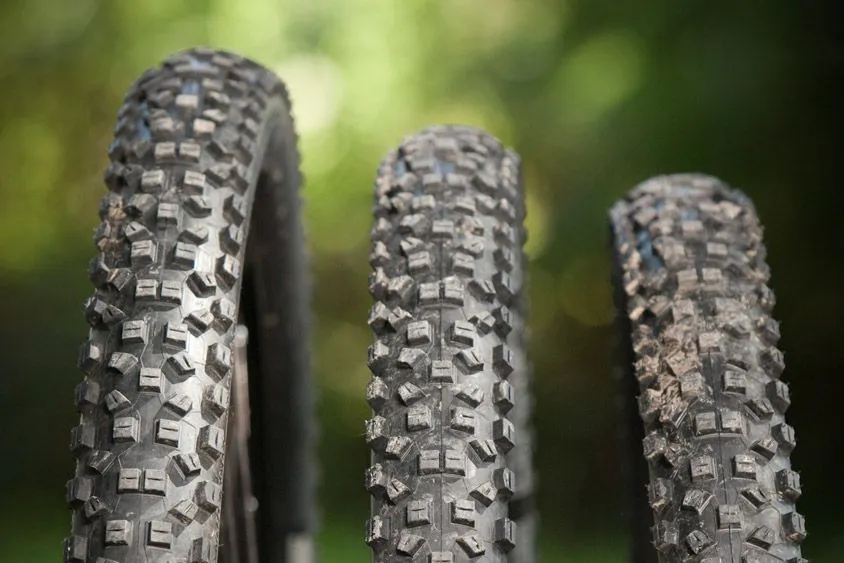
While front mudguards are a common sight on the trails and quickly becoming the norm in wetter climates, rear mudguards aren’t often seen on mountain bikes.
This is because, as well as not being particularly flattering (although this is subjective), they tend to be noisy at best and at worst they can hinder a rider’s range of motion on the bike.
While there are some options out there that keep most of the mud off your back – such as the Mudhugger MK2 rear mudguard – the priority for most riders is to keep their vision clear. A good front mudguard does just that without any side effects.
If it's very wet and you're worried about spray from your rear wheel, we'd recommend a good pair of waterproof shorts.
Do I need a specific mudguard for my wheel size?
The mudguards on test here are compatible with both 29in and 27.5in wheels. However, it’s important to check if there are any maximum tyre widths stated by the manufacturer.
What about mudguards for other types of bikes?
As well as reviewing mudguards for mountain bikes, we also test the best mudguards for road and hybrid bikes and we have a buyer's guide to gravel bike mudguards with product recommendations.
